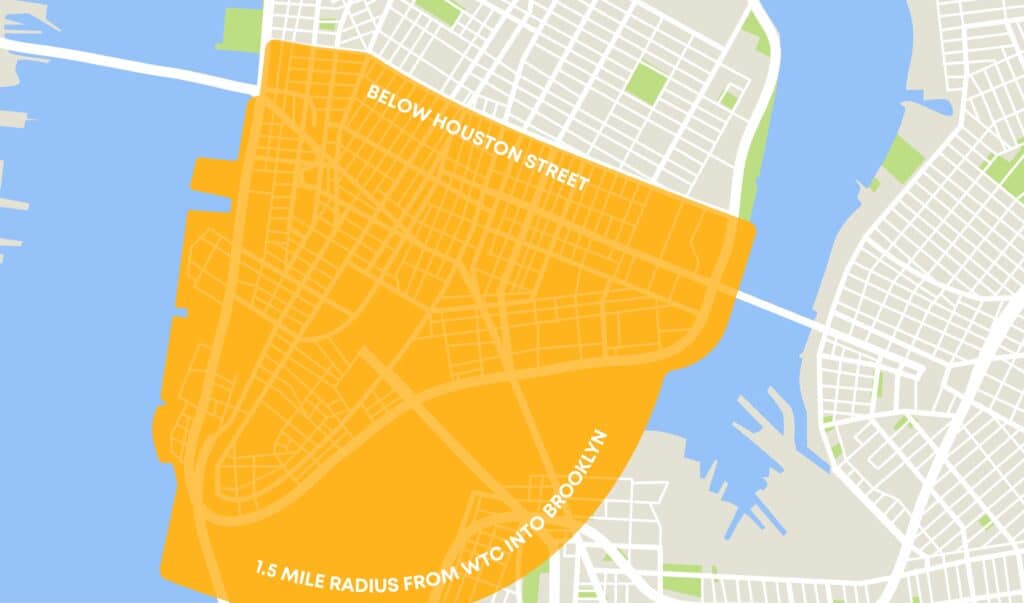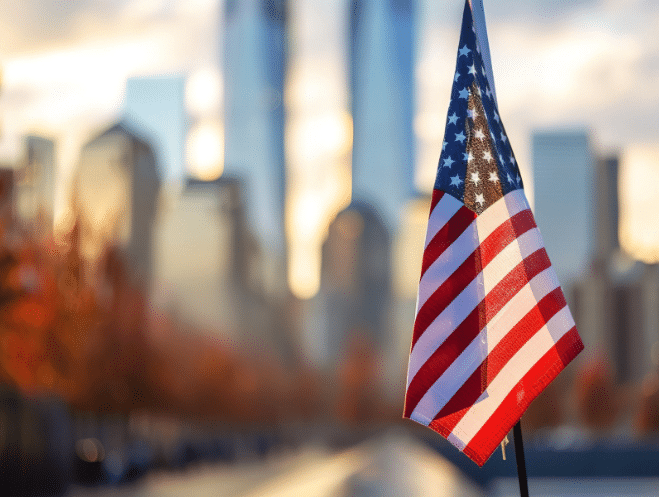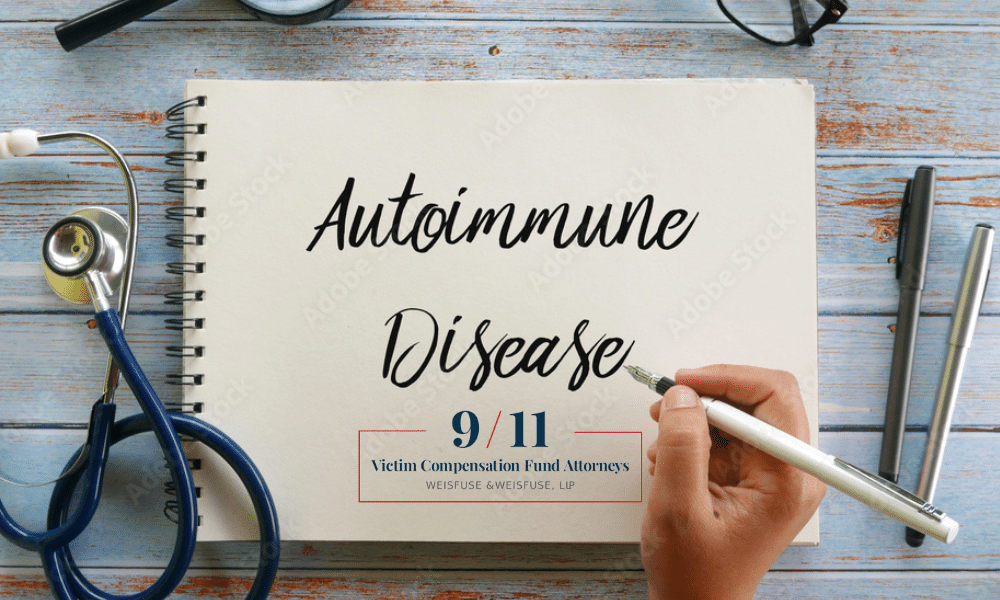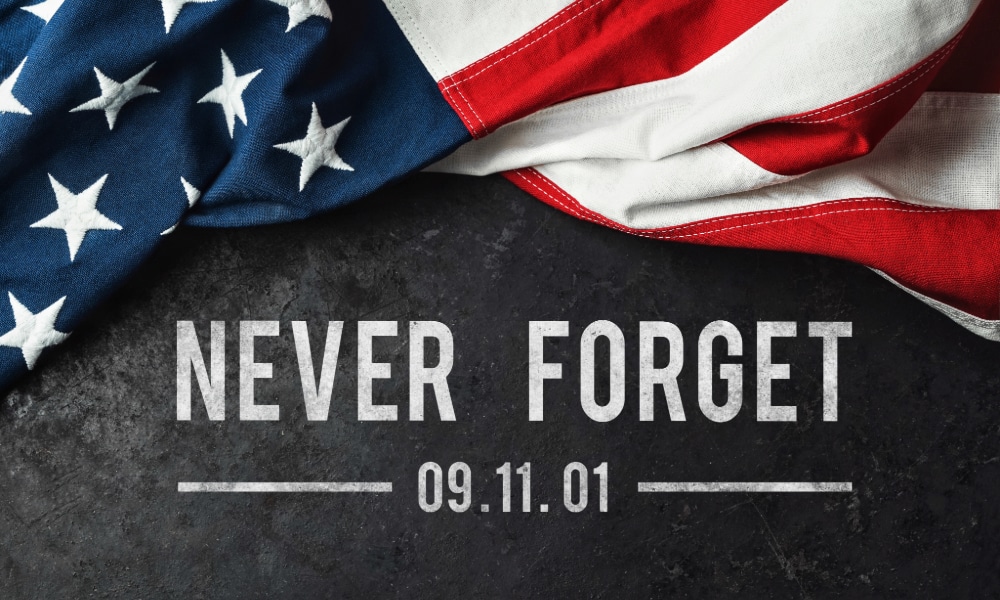
In the immediate aftermath of the terrorist attacks on the World Trade Center and the Pentagon, most emergent medical attention centered around injuries including burns, broken bones, severe lacerations, head trauma, and eye and organ damage. In addition to the more than 6,000 victims who were injured, there were the nearly 3,000 who died. As weeks and months went on, new post 9/11 illnesses and conditions started to appear. First, there was the chronic cough and respiratory symptoms that were given the name “World Trade Cough Syndrome,” which included rhinosinusitis and bronchitis or asthma-like symptoms. This was also linked to gastroesophageal reflux dysfunction (GERD), a digestive disorder that affects the muscle between the esophagus and stomach, causing a severe form of acid reflux.
A study published in September 2011 of 27,449 of responders and recovery workers (including police officers, firefighters, construction workers, and municipal workers) found a “substantial burden of physical and mental health problems.” That doesn’t include the tens of thousands who were employed, were living, or went to school in the area on that dreadful day.
Decades later, most fractures have healed and cuts may have scarred over, but there are lingering diseases and disorders that have only just started to become evident, including 9/11 cancers. That means new and ongoing suffering for responders and survivors alike.
Those near Ground Zero continue to be most at risk of cancer
A 2021 article in Scientific American states that “The health effects from environmental exposures in the days and months after the attack linger—or develop anew as cancers begin to form. About 74 percent of responders in the WTC Health Program have been diagnosed with at least one physical or mental health condition directly linked to 9/11 exposure, including 20 percent with cancer and 28 percent with a mental health condition.”
In fact, those who were closest to the World Trade Center and environs on 9/11—an area known as the NYC Exposure Zone—suffer from the long-term effects of both the psychological trauma and more than 100 diseases, syndromes, and other medical conditions. Exposure to the toxic dust is of great concern as it contained numerous harmful toxicants, suspected cancer-causing chemicals and heavy metals. Included in this lethal stew were:
- Asbestos: The only proven cause of mesothelioma.
- Lead: Especially dangerous to fetuses and young children; can cause damage to the nervous system. Can also cause anemia and kidney and brain damage in adults and children.
- Mercury: Exposure to mercury and/or breathing mercury vapors can damage the nervous system, kidneys, liver and immune system.
- Coarse and super-coarse particulates: Highly alkaline particles that were suspended in the air following the collapse of the Twin Towers are a leading cause of acute and chronic respiratory and aerodigestive disorders including GERD, COPD, sleep apnea and chronic rhinosinusitis.
- Carcinogenic (cancer-causing) agents found in the dust include benzene, cadmium, polychlorinated biphenyls, and persistent organic pollutants such as dioxin and polyaromatic hydrocarbons
Cancer is on the rise for 9/11 victims
It was not until 2012 that cancer was added as to the World Trade Center Health Program (WTCHP) of post 9/11 illnesses. Cancer has a latency period: it is the time between initial exposure to a carcinogen and the time when a diagnosis of cancer is made. Latency rates vary. Some types of cancer, such as lymphomas and leukemias, have a latency rate of as little as 146 days. Mesothelioma, an aggressive cancer that may affect the lungs (pleural mesothelioma) or the tissue in the abdomen (peritoneal), or even the tissue around the heart or testicles, has a minimum latency of 11 years, but may take as long as 40 years after initial exposure to be diagnosed.
As those who were more likely to be exposed to the 9/11 toxins age (for instance, the average age of a WTC first responder is 55 years old), the latency periods are catching up. At the same time, age often means greater vulnerability to cancer and other diseases.
The WTC Health Program currently certifies 68 different types of cancer, with uterine cancer recommended for inclusion by the Scientific/Technical Advisory Committee (STAC). A decision by the WTCHP Administrator is expected in 2022.
Mental health issues plague responders, rescuers, and survivors
Virtually every American who saw the horror of the attacks and watched the Twin Towers collapse in a veil of smoke and dust is haunted by that day. For those who were there—whether a firefighter, police officer, clean-up volunteer or someone who lived, worked, or went to school in or near the WTC—the emotional toll was likely greater still. Mental health issues are an ongoing concern. Certified 9/11 mental health conditions covered by the WTC Health Program include:
- Acute stress disorder
- Adjustment disorder
- Anxiety
- Depression
- Dysthymic disorder
- Panic disorder
- Post-traumatic stress disorder (PTSD)
- Substance use disorder
You may be eligible for free medical care and financial compensation for your post 9/11 illness
The two federal programs that offer benefits for those who suffer from certified 9/11-related physical or mental illnesses include the WTC Health Program and the September 11th Victim Compensation Fund (VCF).
The WTC Health Program offers medically necessary monitoring and treatment for certified conditions, as well as “conditions that result from the treatment or progression of a certified condition.” Those who have or believe they may have an illness related to 9/11 and are in an Eligible Group can apply for enrollment in the program. The application process requires documentation to satisfy eligibility requirements. Necessary documentation depends on whether an applicant is a responder (i.e., FDNY, WTC general responder or Pentagon/Shanksville responder) or a survivor who can provide proof of presence in the dust cloud or in the NYC Disaster Area between September 11, 2001 and July 31, 2002 for a specified amount of time.
The September 11th Victim Compensation Fund provides economic and non-economic compensation to individuals who have been diagnosed with a certified 9/11 condition (or families of deceased individuals) who were present at the WTC, the Exposure Zone, or the Shanksville, PA or Pentagon crash sites. Registration with the September 11th Victim Compensation Fund is not dependent on currently having a certified medical condition, but filing a claim is.
As of June 2022, the September 11th Victim Compensation Fund has awarded $10 billion to 45,000 responders and survivors, helping them move forward and have a more secure financial future.
Contact our September 11th Victim Compensation Fund Attorneys
If you or a family member was sickened by a post-9/11 illness, know that you may be eligible to receive medical and financial benefits. To learn more about how the attorneys at Weisfuse & Weisfuse, LLP can help you navigate the claims process to help ensure maximum benefits, please call us at 212-983-3000 or contact us online to schedule a free consultation to discuss your needs.

About Jason Weisfuse –
9/11 Victim Compensation Fund Attorney
About Jason Weisfuse –
9/11 Victim Compensation Fund Attorney
Jason E. Weisfuse is a seasoned 9/11 cancer attorney and managing partner at Weisfuse & Weisfuse, LLP, a New York City-based law firm dedicated to representing individuals affected by the September 11th attacks. Since the establishment of the September 11th Victim Compensation Fund (VCF), Jason has been instrumental in assisting first responders, survivors, and families in securing the compensation and medical benefits they deserve.
With a Juris Doctor from New York Law School (2009), Jason brings extensive experience regarding the 9/11 Victim Compensation Fund to his practice. His deep understanding of the VCF and the World Trade Center Health Program (WTCHP) has enabled him to navigate complex claims processes effectively, resulting in substantial awards for his clients.
Jason’s commitment to the victims in the 9/11 community is evident through his active involvement in professional organizations such as the New York State Trial Lawyers Association and the American Association for Justice. He has also contributed to legal discourse with publications in the New York Law Journal, reflecting his dedication to legal excellence and advocacy.
At Weisfuse & Weisfuse, LLP, Jason continues to provide compassionate and knowledgeable representation, ensuring that those affected by 9/11 receive the support and compensation they are entitled to.







